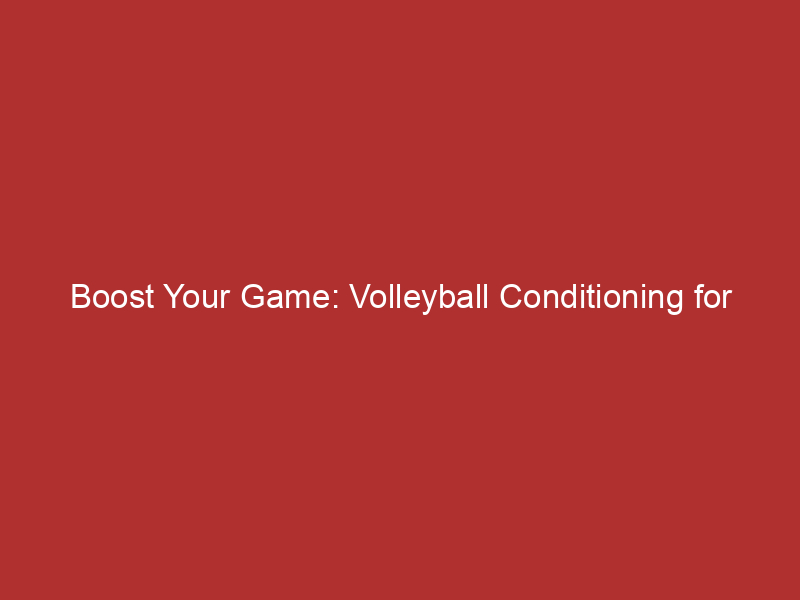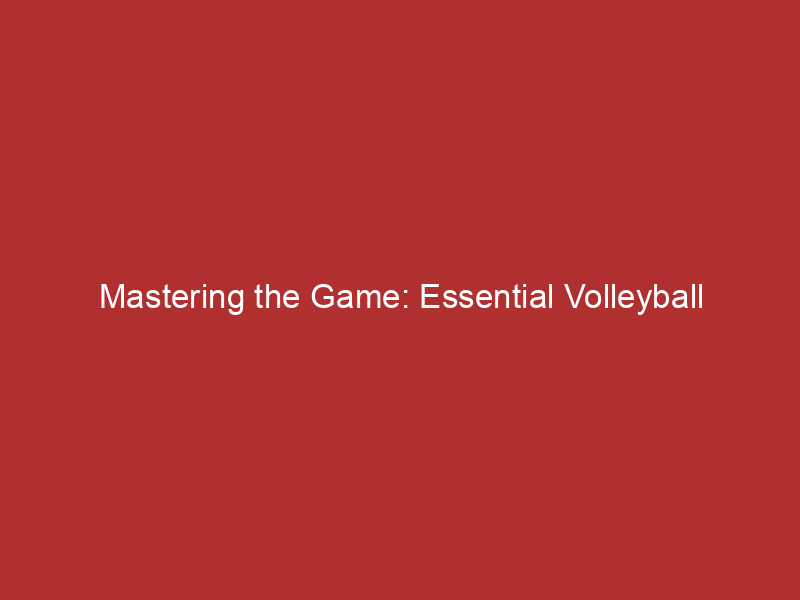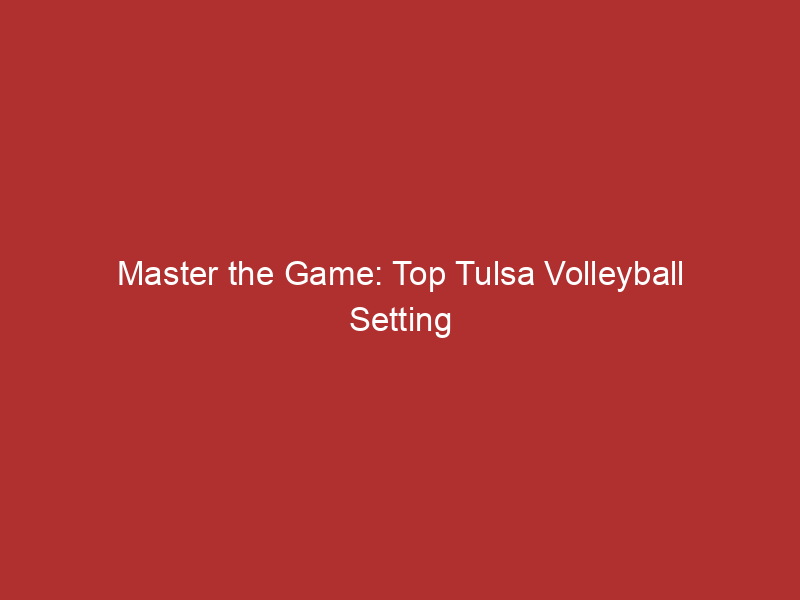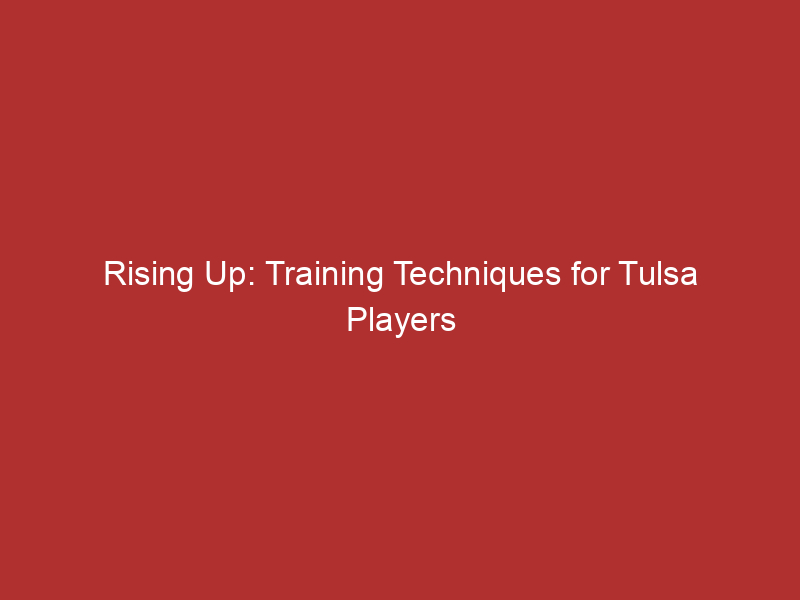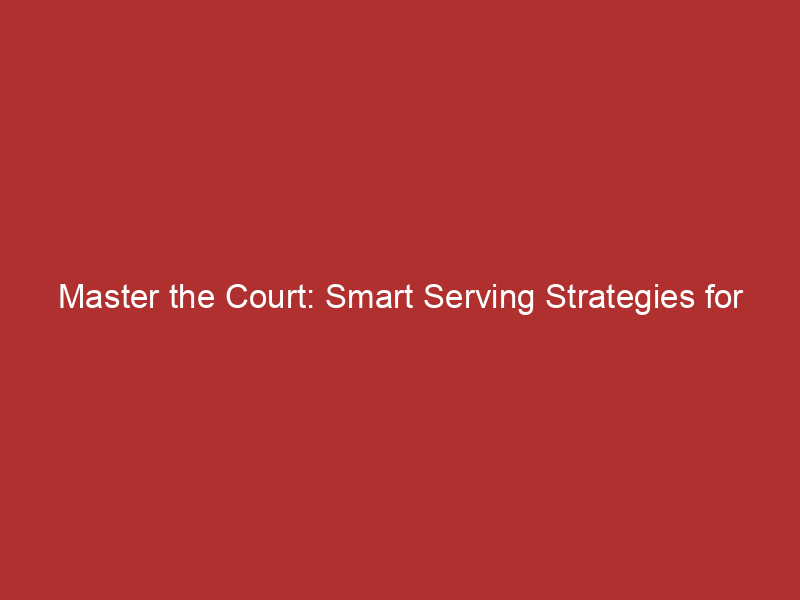Introduction to Volleyball Endurance Training
Hey there, volleyball enthusiasts! Today, we’re going to talk about something super important in the world of volleyball – endurance training. This isn’t just about being able to play longer; it’s about playing better, too. So, let’s dive in!
- Importance of Stamina in Volleyball
- Benefits of Volleyball Conditioning Exercises
Stamina, or endurance, is a big deal in volleyball. Why, you ask? Well, volleyball matches can last anywhere from 30 minutes to an hour or more. That’s a lot of jumping, diving, and sprinting! Players with good stamina can keep up the pace and stay sharp, even in the final minutes of a match. They’re less likely to make mistakes due to fatigue and more likely to make those game-winning plays. Wikipedia has some interesting stats on match durations, if you’re curious.
Now, let’s talk about conditioning exercises. These are workouts designed to boost your stamina and overall fitness. They can help you become a stronger, faster, and more agile player. But that’s not all! Conditioning exercises can also reduce your risk of injury, improve your coordination, and even boost your mental toughness. Sounds pretty awesome, right?
So, are you ready to take your volleyball game to the next level? Stay tuned for our next sections where we’ll discuss specific training for endurance, conditioning drills, workouts, and fitness techniques. Let’s make you an unstoppable force on the volleyball court!
Volleyball Training for Endurance
Hey there, volleyball enthusiasts! Let’s dive into the world of endurance training and see how it can elevate your game to the next level.
Understanding the Basics
Before we jump into the nitty-gritty, let’s get a handle on the basics. We’re going to discuss what endurance training is and how it can benefit you as a volleyball player.
- What is endurance training?
- How does it benefit volleyball players?
Endurance training, in a nutshell, is a type of physical training that helps improve your stamina and endurance. It involves exercises that increase your heart rate and breathing for extended periods. This type of training helps your body become more efficient at delivering and using oxygen, which is super important when you’re playing a fast-paced game like volleyball.
Endurance training is like a secret weapon for volleyball players. It helps you stay strong and active throughout the game, even during those intense final moments. It reduces fatigue, improves your overall performance, and can even help prevent injuries. Plus, it gives you an edge over your opponents who might not have the same level of stamina.
Now that we’ve got the basics down, we’ll be diving into some key volleyball stamina exercises in the next section. So, stay tuned and get ready to take your volleyball game to new heights!
Key Volleyball Stamina Exercises
Hey there, volleyball enthusiasts! Let’s dive into some key exercises that can help boost your stamina on the court. These exercises are designed to help you last longer in games, move quicker, and jump higher. Ready? Let’s get started!
- Cardiovascular Exercises
- Strength Training Exercises
- Flexibility Exercises
Cardio exercises are a must for any volleyball player. They help to increase your heart rate, improve your lung capacity, and build endurance. Some great cardio exercises for volleyball players include running, cycling, and swimming. For example, you could try running for 30 minutes a day, 3 times a week. This will help you stay on your feet longer during those intense volleyball matches. Here is some more information on cardiovascular exercises.
Strength training is another key component of volleyball stamina. It helps you to hit the ball harder, jump higher, and stay strong throughout the game. Some effective strength training exercises include squats, lunges, and push-ups. Remember, it’s not about lifting heavy weights, but about building functional strength that you can use on the court. Here is some more information on strength training exercises.
Flexibility exercises are often overlooked, but they’re super important for volleyball players. They help to prevent injuries, improve your range of motion, and enhance your performance on the court. Some great flexibility exercises include yoga, Pilates, and stretching routines. Try to incorporate these into your training schedule at least twice a week. Here is some more information on flexibility exercises.
Remember, the key to improving your volleyball stamina is consistency. Keep up with these exercises, and you’ll see improvements in no time. Now, let’s get out there and play some volleyball!
Conditioning Drills for Volleyball
Hey there, volleyball enthusiasts! We all know that volleyball is a sport that demands a lot from our bodies. So, let’s dive into some conditioning drills that can help you level up your game. Ready? Let’s go!
Stamina Building Techniques in Volleyball
Building stamina is like filling up your energy tank. The more you have, the longer you can play at your best. Here are some techniques that can help you boost your stamina:
- Interval Training: This is a type of training that involves alternating between high-intensity and low-intensity exercises. It’s like playing a game of volleyball – you have moments of intense action followed by short breaks. This type of training can help improve your cardiovascular fitness and endurance. For example, you could sprint for 30 seconds, then walk for 60 seconds, and repeat.
- Resistance Training: This involves exercises that make your muscles work against a weight or force. Resistance training can increase your strength, tone, mass, and endurance. This could be anything from lifting weights to using resistance bands. Remember, stronger muscles can help you hit the ball harder and jump higher!
- Speed and Agility Drills: Speed and agility are crucial in volleyball. You need to be quick on your feet to reach the ball and agile enough to move in different directions quickly. Drills like ladder drills, cone drills, or zig-zag runs can help improve your speed and agility.
Remember, the key to improving your stamina is consistency. So, stick to your training routine, and you’ll see improvements in no time. Now, let’s get out there and start training!
Practical Volleyball Conditioning Drills
Hey there, volleyball enthusiasts! Let’s dive into some practical volleyball conditioning drills that you can do to boost your game. These drills are designed to increase your speed, agility, and endurance, making you a formidable player on the court. Ready? Let’s get started!
- Shuttle Runs
- Jump Rope Drills
- Circuit Training
Shuttle runs are a great way to improve your agility and speed. This drill involves running back and forth between two points in a set amount of time. It’s like playing a mini game of volleyball, but without the ball! You’ll be surprised at how quickly you can move when you’re pushing yourself to the limit. Learn more about shuttle runs here.
Jumping rope isn’t just for kids – it’s a fantastic conditioning drill for volleyball players too! It helps to improve your footwork, coordination, and agility. Plus, it’s a fun way to get your heart rate up. Try different jump rope techniques like double unders or criss-cross to keep things interesting. Find out more about jump rope drills here.
Last but not least, we have circuit training. This is a combination of high-intensity aerobics and resistance training designed to be easy to follow and target fat loss, muscle building, and heart-lung fitness. An exercise “circuit” is one completion of all prescribed exercises in the program. Discover more about circuit training here.
Remember, the key to improving your volleyball game is consistency. Keep practicing these drills and you’ll see improvement in no time. Now, get out there and start training!
Endurance Workouts for Volleyball
Building endurance is a key component of volleyball training. It helps you stay strong and energetic throughout the game. Let’s explore how to create an effective workout plan for volleyball endurance.
Creating a Workout Plan
Creating a workout plan that suits your needs is the first step to improving your volleyball endurance. Here are a couple of things to consider:
- Designing a balanced workout routine
- Incorporating rest and recovery
A balanced workout routine includes a mix of cardio, strength training, flexibility exercises, and agility drills. Cardio helps improve your stamina, strength training builds muscle endurance, flexibility exercises prevent injuries, and agility drills enhance your speed and coordination on the court.
Rest and recovery are just as important as the workouts themselves. Your muscles need time to repair and grow stronger. Make sure to include at least one rest day in your weekly workout plan. On this day, focus on activities that promote recovery, like stretching, yoga, or even a leisurely walk.
Remember, the best workout plan is the one you can stick to. Start slow, gradually increase the intensity of your workouts, and most importantly, have fun!
Sample Volleyball Stamina Training Plan
Let’s dive into a simple, yet effective, three-day workout plan designed to boost your volleyball stamina. This plan combines cardio, strength training, flexibility, agility drills, and rest days to ensure a balanced approach to your volleyball endurance training.
- Day 1: Cardio and Strength Training
- Day 2: Flexibility and Agility Drills
- Day 3: Rest and Recovery
Start your week with a mix of cardio and strength training. Cardio exercises like running or cycling will help increase your heart rate and improve your endurance. Strength training, on the other hand, can be done with weights or bodyweight exercises. This will help build your muscles, making you stronger and more resilient on the court. For example, you might do a 30-minute run followed by a series of push-ups, squats, and lunges.
On the second day, focus on flexibility and agility drills. Flexibility exercises such as stretching and yoga can help prevent injuries and improve your performance. Agility drills, like ladder drills or cone drills, will improve your speed and quickness on the court. Remember, volleyball is not just about power, but also about being able to move quickly and efficiently.
Don’t underestimate the importance of rest and recovery. This day is all about giving your body a chance to heal and recharge. You might consider light activities like walking or gentle yoga, but the main goal is to rest. This will help your muscles recover and prepare for the next round of training.
Remember, this is just a sample plan. Feel free to adjust it based on your needs and fitness level. The key is consistency and balance. Keep up with your training, and you’ll see improvements in your volleyball stamina in no time!
Volleyball Fitness Techniques
Hey there, volleyball enthusiasts! Let’s dive into some cool fitness techniques that can help you ace your game. One of the key elements to consider is nutrition. Yes, you heard it right! What you eat can significantly affect your performance on the court. Let’s explore this further.
Boosting Performance with Proper Nutrition
Just like a car needs the right fuel to run smoothly, your body also needs proper nutrition to perform at its best. But what does ‘proper nutrition’ mean for a volleyball player? Let’s break it down.
- Importance of a balanced diet for volleyball players
- Pre and post-workout nutrition tips
A balanced diet is crucial for all athletes, and volleyball players are no exception. It provides the energy you need to play and recover. A good diet should include a mix of carbohydrates for energy, proteins for muscle repair, and fats for long-term energy. And of course, don’t forget your fruits and veggies for vitamins and minerals!
Before a workout or a game, aim for a meal rich in carbohydrates and protein. This could be a peanut butter sandwich or a bowl of oatmeal with fruit. After the workout, refuel with a protein-rich snack like a protein shake or a chicken sandwich. This helps repair your muscles and get you ready for the next game.
Remember, good nutrition is just as important as your training. So, make sure you’re fueling your body right to keep those serves and spikes on point!
Importance of Hydration in Volleyball Conditioning
When it comes to volleyball, it’s not just about the drills, the jumps, and the spikes. One crucial aspect that often gets overlooked is hydration. Yes, you heard that right! Staying hydrated is super important for volleyball players. Let’s dive into why.
- Effects of Dehydration on Performance
- Hydration Strategies for Volleyball Players
Dehydration can be a real game-changer, and not in a good way. When your body doesn’t have enough water, it can’t perform at its best. According to Wikipedia, even a small amount of dehydration can lead to decreased coordination, fatigue, and muscle cramps. Imagine trying to serve a volleyball with crampy arms, yikes!
But that’s not all. Dehydration can also affect your concentration and decision-making skills. In a fast-paced game like volleyball, every second counts. You need to be sharp and focused to make those split-second decisions. If you’re dehydrated, your brain might not be able to keep up with the game.
Now that we know how important hydration is, let’s talk about some strategies to stay hydrated. It’s not just about drinking a lot of water. You need to hydrate smart!
First, make sure you’re drinking enough water throughout the day, not just during practice or games. A good rule of thumb is to drink half your body weight in ounces of water each day. So, if you weigh 150 pounds, you should aim for 75 ounces of water daily.
Second, don’t wait until you’re thirsty to drink. Thirst is a sign that your body is already dehydrated. Try to sip on water throughout the day to keep your hydration levels up.
Lastly, consider using a sports drink during long practices or games. These drinks contain electrolytes, which can help replace the ones you lose through sweat. Just be careful to choose drinks with low sugar content to avoid unnecessary calories.
Remember, staying hydrated is a key part of volleyball conditioning. So, grab your water bottle and let’s hit the court!
Conclusion: Achieving Unstoppable Stamina in Volleyball
Wow, we’ve covered a lot of ground today, haven’t we? Let’s take a moment to recap everything we’ve learned about building unstoppable stamina for volleyball. Remember, it’s not just about the exercises and techniques, but also about the consistency in your training. Let’s dive in!
- Recap of volleyball conditioning exercises and techniques
- Importance of consistency in training
We’ve explored a variety of conditioning exercises and techniques, each designed to boost your volleyball endurance. From squats and lunges to improve lower body strength, to planks and push-ups for core and upper body strength. We also talked about the importance of cardio exercises like running and swimming to increase your overall stamina. And let’s not forget the volleyball-specific drills, like setting, spiking, and digging, which help improve your game skills while also boosting your endurance.
Consistency is key when it comes to training. You can’t expect to see improvements if you’re not putting in the work on a regular basis. This doesn’t mean you have to train every single day, but you should aim for at least 3-4 times a week. And remember, it’s not just about the quantity of training, but also the quality. Make sure you’re focusing on proper form and technique during each and every workout. This will help prevent injuries and ensure you’re getting the most out of your training sessions.
So there you have it, folks! With the right exercises, techniques, and a consistent training schedule, you too can achieve unstoppable stamina in volleyball. Now go out there and show them what you’re made of!

